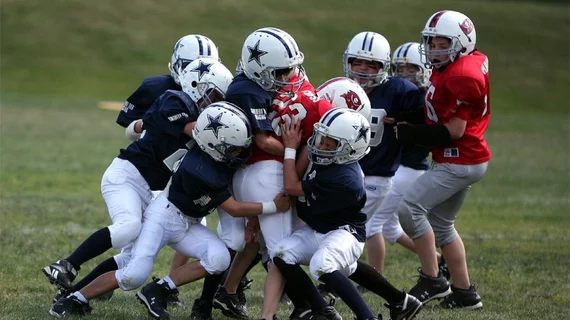Depression, history of prior injury make young football players more likely to sustain a concussion
More than five percent of young football players sustain a concussion while playing or practicing the sport, according to a new study published in the Journal of Pediatrics. Experiencing a prior concussion and a history of depression were both associated with a greater risk of sustaining a concussion.
“Estimates suggest sports and recreation-related concussions affect up to 1.9 million youth each year,” wrote Sara P.D. Chrisman, MD, Seattle Children’s Research Institute in Seattle, Washington, and colleagues. “Although studies have examined concussion in high school-aged youth, there is scant research on the incidence and natural history of concussion in elementary and middle school aged youth.”
The authors followed 863 athletes (996 player-seasons) between the ages of five and 14 years old who played football in the United States. Fifty-one of those players sustained a football-related concussion, a rate of 5.1 percent per season. Players with a history of concussion were twice as likely to sustain a concussion, and players with a documented history of depression were five times as likely.
“The relationship between depression and concussion is complex and this study adds important data on younger players,” the authors wrote. “It is possible that athletes with a history of depression are more sensitive to their own symptoms and thus more likely to report them and be diagnosed with a concussion. It is also possible that a history of depression is in some manner linked to a greater susceptibility for concussion, perhaps owing to the increased risk taking associated with depression. However, the estimates regarding depression in the current study were based on small numbers, and further research is needed to confirm and understand this relationship.”
Chrisman et al. also noted that three young athletes from the study returned to football before they should have. “It is possible that additional youth might have minimized symptoms, and thus the true number returning while symptomatic may be greater,” they wrote. “Although the return of these youth was not excessively rapid, with 2 returning 7 days after injury (an adequate amount of time to complete a graduated return to sport) and the other 29 days after injury, it is still concerning that they may have played while not fully recovered, which would place them at risk for more severe injury.”

